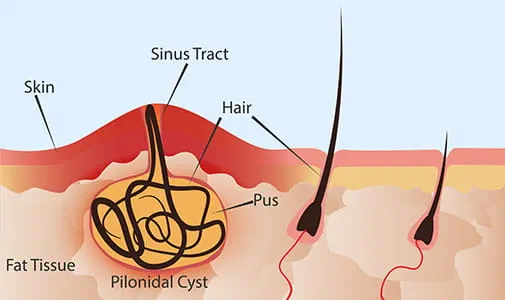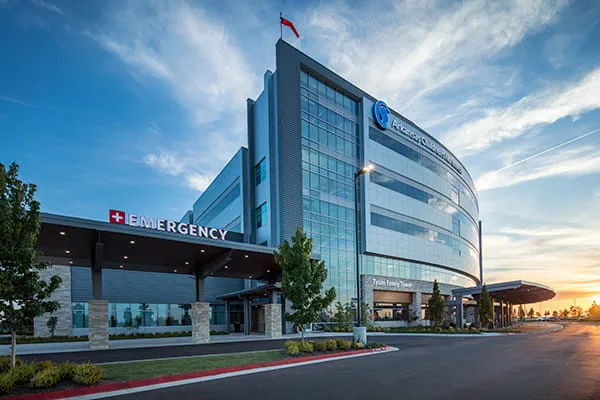All gifts matched today through December 2 for Giving Tuesday! Click here to double your impact!

Ranked nationally in pediatric care.
Arkansas Children's provides right-sized care for your child. U.S. News & World Report has ranked Arkansas Children's in seven specialties for 2025-2026.

It's easier than ever to sign up for MyChart.
Sign up online to quickly and easily manage your child's medical information and connect with us whenever you need.

We're focused on improving child health through exceptional patient care, groundbreaking research, continuing education, and outreach and prevention.

When it comes to your child, every emergency is a big deal.
Our ERs are staffed 24/7 with doctors, nurses and staff who know kids best – all trained to deliver right-sized care for your child in a safe environment.

Arkansas Children's provides right-sized care for your child. U.S. News & World Report has ranked Arkansas Children's in seven specialties for 2025-2026.

Looking for resources for your family?
Find health tips, patient stories, and news you can use to champion children.

Support from the comfort of your home.
Our flu resources and education information help parents and families provide effective care at home.

Children are at the center of everything we do.
We are dedicated to caring for children, allowing us to uniquely shape the landscape of pediatric care in Arkansas.

Transforming discovery to care.
Our researchers are driven by their limitless curiosity to discover new and better ways to make these children better today and healthier tomorrow.

We're focused on improving child health through exceptional patient care, groundbreaking research, continuing education, and outreach and prevention.

Then we're looking for you! Work at a place where you can change lives...including your own.

When you give to Arkansas Children's, you help deliver on our promise of a better today and a healthier tomorrow for the children of Arkansas and beyond

Become a volunteer at Arkansas Children's.
The gift of time is one of the most precious gifts you can give. You can make a difference in the life of a sick child.

Join our Grassroots Organization
Support and participate in this advocacy effort on behalf of Arkansas’ youth and our organization.

Learn How We Transform Discovery to Care
Scientific discoveries lead us to new and better ways to care for children.

Learn How We Transform Discovery to Care
Scientific discoveries lead us to new and better ways to care for children.

Learn How We Transform Discovery to Care
Scientific discoveries lead us to new and better ways to care for children.

Learn How We Transform Discovery to Care
Scientific discoveries lead us to new and better ways to care for children.

Learn How We Transform Discovery to Care
Scientific discoveries lead us to new and better ways to care for children.

Learn How We Transform Discovery to Care
Scientific discoveries lead us to new and better ways to care for children.

When you give to Arkansas Children’s, you help deliver on our promise of a better today and a healthier tomorrow for the children of Arkansas and beyond.

Your volunteer efforts are very important to Arkansas Children's. Consider additional ways to help our patients and families.

Join one of our volunteer groups.
There are many ways to get involved to champion children statewide.

Make a positive impact on children through philanthropy.
The generosity of our supporters allows Arkansas Children's to deliver on our promise of making children better today and a healthier tomorrow.

Read and watch heart-warming, inspirational stories from the patients of Arkansas Children’s.
Hello.

Arkansas Children's Hospital
General Information 501-364-1100
Arkansas Children's Northwest
General Information 479-725-6800

Pilonidal Disease

Pilonidal disease is a chronic condition that affects the skin and tissue of the crease between the buttocks. This condition is believed to occur when hair follicles in this area become clogged, leading to infection and pain. The body's immune system treats the hair follicle as a foreign object and forms a fluid-filled cyst around the area - often called a pilonidal cyst or pilonidal sinus. Pilonidal disease usually affects boys more than girls and are more common in adolescents and young adults (ages 13-21) when body hair grows and oil production increase.
Some other causes of this condition include:
- A lot of body hair – specifically coarse or curly hair
- Family history of pilonidal cysts
- Sitting for long periods of time
- Being overweight
- Having a deep gluteal cleft in the buttock
Symptoms
The first symptom is usually pain when sitting down. Other symptoms include a tender lump or cyst, redness, swelling, pus or fluid draining from the cyst, and fever.
Possible Treatments
Antibiotics are usually recommended to help treat the infection. The treatment of pilonidal disease starts with hair removal and hygiene. The Arkansas Children's surgical team offers laser hair removal for those with dark, coarse hair. "Pit" or "sinus" removal can also be provided after addressing infections. This technique is less invasive than traditional surgery and is tolerated well by patients.
Cysts can recur (or come back) if the hair isn't removed. Removing the hair relieves the pain and the infection.
The team of experts at Arkansas Children's understand and work with our teenage patients to develop a treatment plan. Our minimally invasive approach lets patients get back to normal activities as soon as possible with few restrictions.
Meet the Team
-

-
-

Shelby Earnest-Hastings, CNP
Surgery
Little Rock -

Richard Jackson, MD
Surgery
Little Rock, Springdale -

-

Robert Maxson, MD
Burn Program, Surgery
Little Rock, Springdale -

David Wigginton, PA
Surgery
Springdale -

Deidre Wyrick, MD
Critical Care Medicine, Surgery
Little Rock, Springdale -

Jennifer York, CNP
Surgery
Little Rock, Springdale
Locations
-

-

Arkansas Children's Northwest
2601 Gene George Blvd.
Springdale, AR 72762
479-725-6800
View Location


